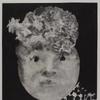Bernhardt and Abbéma: Leading Ladies of the Belle Époque
- March 07, 2016 08:28
In honor of International Women’s Day celebrated on March 8, 2016, we look back to the extraordinary lives of two of the most unapologetically daring and creative women represented in our collection at M.S. Rau Antiques. The stories of the painter Louise Abbéma and actress Sarah Bernhardt were infinitely entwined during their lifetimes, and remain immortally so in our Portrait of Sarah Bernhardt painted by Abbéma’s hand. Both were noteworthy artists, and both were remarkable women ahead of their time. On this day that celebrates the achievements of women across the globe, it only seems appropriate to put these trendsetters in the spotlight once more.
The spotlight was indeed a familiar place for this duo, who dominated the Parisian cultural scene in the late nineteenth century. Born into an age of widening cultural and economic spheres, Abbéma and Bernhardt benefited from - and helped to advance - the new tolerant mentality of post-Revolution France. While they existed on the margins of society as both artists and women, Bernhardt and Abbéma achieved a level of success and fame that few others could. Ultimately, it was their ability to promote their public personas – at times admittedly outlandish and eccentric – that kept them in the limelight.
Recognized today as the first international star of the stage, Bernhardt reinvented herself early in her career, cultivating her image as a public icon. She made her stage debut in 1862 in Racine’s tragic Iphigénie, and, less than a decade later, was established as one of the most famous actresses of the 19th-century stage. Dubbed the “Divine Sarah” by her fans, she was one of the first true celebrities, and her fame spread well beyond France.
Her career as an actress spanned over 60 years – she was one of the few actresses to successfully make the leap from stage to screen. In many ways, the dramatic romances and tragedies of the heroines she played reflected her own personal life. Her love affairs were notorious, the first with Prince Henri de Ligne (with whom she had a child) and later with Jean Mounet-Sully, Victor Hugo, Louis-Napoléon, Gustave Doré, and others as her fame spread. Her life was not without its struggles, yet it was her strength in the face of her hardships that truly defines her character.
By the time she met Louise Abbéma, the spark of Bernhardt’s fame had already ignited. The young Abbéma came to Paris in 1873 at the age of 15 to study with the painters Charles Chaplin and Carolus-Duran. At this time, it was still unusual for women to be accepted into the art academies, though some female artists had achieved success. Most notable of these was Rosa Bonheur, whom Abbéma credits as her greatest influence. In spite of the male-dominated artistic sphere, Abbéma thrived in Paris, moving in the artistic circles that would lead her to Bernhardt.
At the age of 18, Abbéma painted her first portrait of the “Divine Sarah,” which she showed at the Paris Salon of 1876. It was an instant success, and the work propelled the young painter into the limelight alongside her famous subject. From that moment, Abbéma became Bernhardt’s official portraitist; she also received a flood of commissions from wealthy and fashionable clientele. Her works hung in the homes of the French elite, as well as on the walls of the Paris Town Hall and Opera House.
Yet, it was not just her famous subject that brought her success – Abbéma possessed, like Bernhardt, a certain je ne sais quoi. She was brash, smoked cigars, and dressed in men’s clothing, and the attention she attracted brought her much public acclaim. Favored almost as much for her flamboyant behavior as for her popular paintings, it is no wonder that Abbéma became fast, lifelong friends with the equally eccentric Bernhardt. Throughout their fifty-year-long friendship, Abbéma would paint Bernhardt’s portrait numerous times, and would serve as her companion and confidante until Bernhardt’s death in 1823.
Both Bernhardt and Abbéma led vibrant lives, and both left an indelible mark on the world that still resonates today. Their places in history as both individuals and intimates paved the way for the women and artists who followed them. On this day dedicated to celebrating the achievements of women around the world, we hope their stories inspire with their bravery, ingenuity and fierce dedication to their arts.
About M.S. Rau Antiques:
M.S. Rau Antiques has spent over 100 years earning the trust of discerning collectors world-wide. Located in the heart of New Orleans’ historic French Quarter, our peerless showroom houses one of the world’s most extensive and stunning collections of important fine art by artists such as Monet and van Gogh, rare 18th-and 19th-century antiques and breathtaking jewelry, including rare colored diamonds.





















